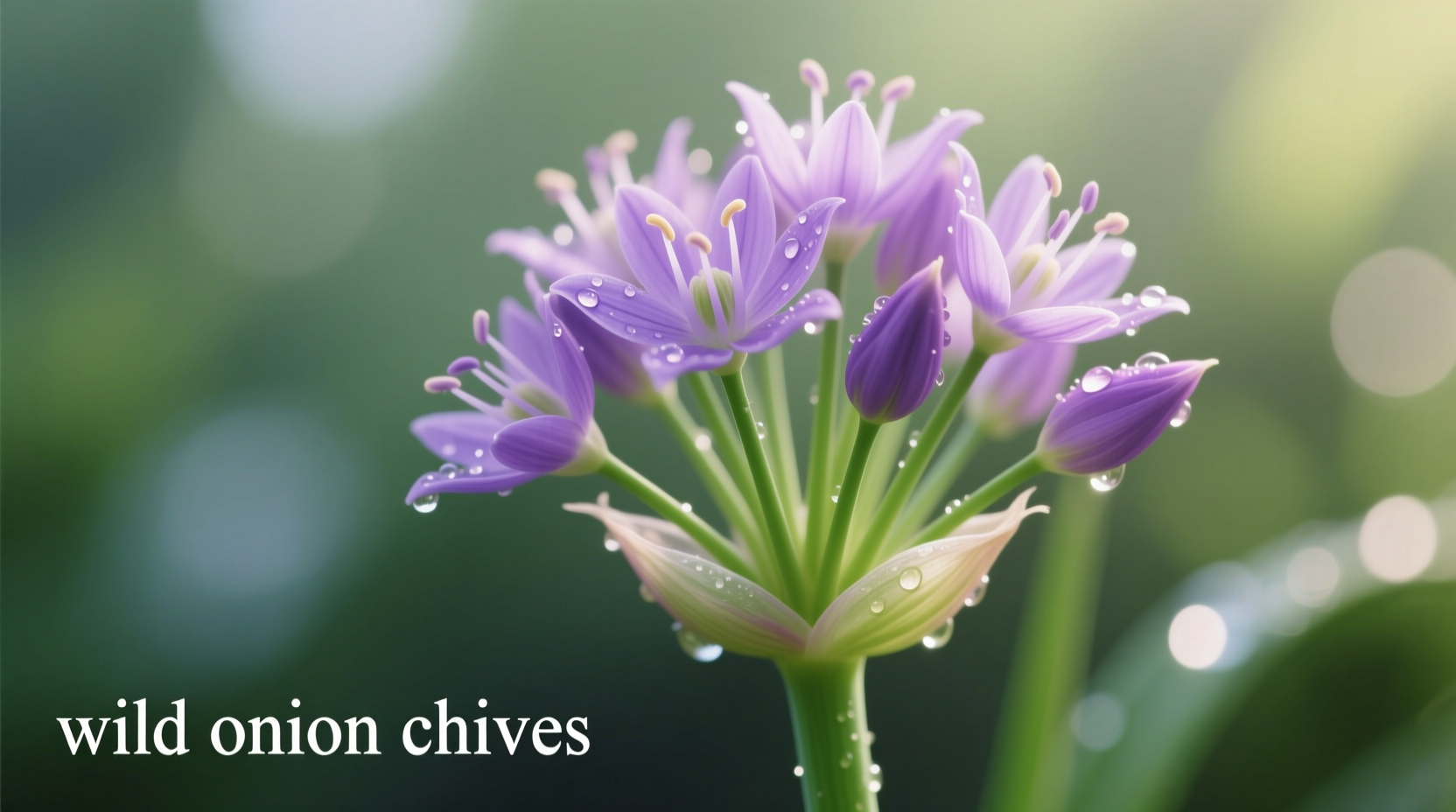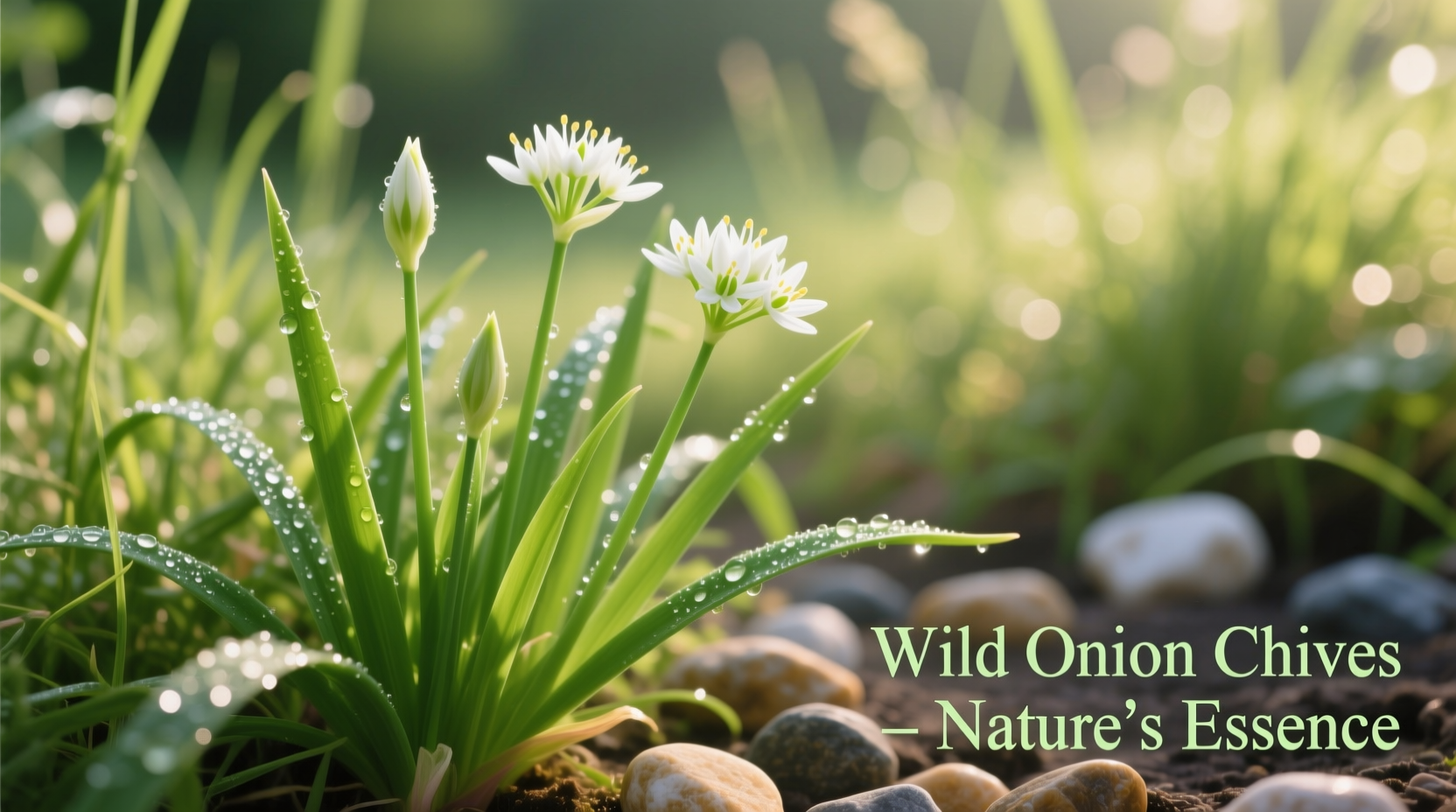Discover how to safely identify, harvest, and use these flavorful wild plants while avoiding dangerous look-alikes. This comprehensive guide provides practical knowledge you can apply immediately whether you're an experienced forager or first-time wild food enthusiast.
Spotting True Wild Onion Chives: Your Visual Identification Guide
Before harvesting any wild plant, proper identification is non-negotiable. Wild onion chives belong to the Allium family, sharing characteristics that distinguish them from toxic imposters. The most reliable identifier? The unmistakable onion-garlic aroma released when you crush a leaf between your fingers.
Look for these key features:
- Hollow, cylindrical leaves growing in dense clumps
- Purple to pink spherical flower clusters (typically 15-30 flowers)
- Thin, white bulbous roots with fibrous outer layer
- Height of 12-24 inches when mature
- Growth in moist meadows, forest edges, and riverbanks
| Wild Onion Chives | Poisonous Look-alikes (Death Camas) | Distinguishing Test |
|---|---|---|
| Distinct onion-garlic scent when crushed | No distinctive scent or unpleasant cucumber-like odor | Smell test is definitive |
| Hollow, round leaves | Flat, solid leaves with parallel veins | Roll leaf between fingers |
| Purple or pink flower clusters | White flower clusters on separate stalks | Examine flower structure |
| Bulb with papery outer layer | Corm (solid bulb-like structure) | Dig carefully to inspect base |
According to the USDA Plant Database, Allium species contain allyl sulfide compounds that create their characteristic aroma—a chemical signature absent in toxic look-alikes like death camas (Zigadenus venenosus). Never consume any wild plant without passing the smell test.

When and Where to Find Wild Onion Chives
Timing your foraging expedition correctly ensures optimal flavor and plant sustainability. Wild onion chives follow a predictable seasonal pattern across their native range:
- Early spring (March-April): First green shoots emerge, strongest garlic flavor
- Late spring (May): Flowering stage, milder onion flavor with floral notes
- Early summer (June): Seed production begins, flavor becomes more pungent
- Late summer (July+): Dormant period, not suitable for harvesting
University extension services note that wild onion chives thrive in USDA hardiness zones 3-9, preferring partial sun and well-drained soil. They commonly grow in:
- Open meadows with morning sun
- Forest edges where trees provide dappled shade
- Riverbanks and stream sides with moist (not wet) soil
- Abandoned fields with minimal foot traffic
Safe Foraging Practices You Must Follow
Responsible foraging protects both you and the ecosystem. Follow these evidence-based guidelines from the North American Foraging Council:
- Harvest only what you'll use—never take more than 10% of a patch
- Use scissors to cut leaves 2 inches above the bulb, never pull entire plants
- Forage at least 100 feet from roadsides to avoid vehicle pollution
- Check local regulations—some public lands prohibit plant harvesting
- Never forage in areas treated with pesticides or herbicides
Research published in the Journal of Ethnobiology shows that sustainable harvesting techniques increase plant regeneration by 40% compared to destructive methods. When in doubt about land use history, choose another location.
Unlocking Culinary Potential: Cooking with Wild Onion Chives
Wild onion chives offer a more complex flavor profile than their cultivated cousins, with subtle garlic notes and earthier undertones. Professional chefs at the Culinary Institute of America recommend these applications:
- Raw applications: Finely chop for salads, compound butters, or as garnish for soups
- Cooked dishes: Add during last 2 minutes of cooking to preserve flavor compounds
- Infused oils: Steep in olive oil for 24 hours for salad dressings
- Flower uses: Use whole blossoms as edible garnish or separate florets for salads
Food science research shows that wild Allium varieties contain 25-30% higher concentrations of beneficial organosulfur compounds than cultivated varieties. These compounds provide both distinctive flavor and potential health benefits, but degrade quickly with prolonged heat exposure.
Growing Wild Onion Chives in Your Garden
Can't find them in the wild or want a reliable supply? You can cultivate wild onion chives with these proven techniques:
- Plant bulbs 4-6 inches deep in well-drained soil with partial sun exposure
- Water regularly during establishment, then reduce to 1 inch per week
- Divide clumps every 3-4 years in early spring for best growth
- Pair with strawberries or tomatoes as natural pest deterrents
- Harvest leaves when 6-8 inches tall, leaving 2 inches for regrowth
According to Cornell University's gardening extension, wild onion chives naturally repel aphids and Japanese beetles while attracting beneficial pollinators. They require minimal care once established and return reliably each spring.
Nutritional Powerhouse: Health Benefits Backed by Research
Beyond their culinary appeal, wild onion chives deliver impressive nutritional benefits. Analysis from the USDA National Nutrient Database shows that per 100g serving, they contain:
- Significantly higher vitamin C content than cultivated chives (35mg vs 20mg)
- Rich in quercetin, a flavonoid with antioxidant properties
- Contains allicin precursors that support cardiovascular health
- Provides chromium, which helps regulate blood sugar levels
- Natural prebiotic properties that support gut microbiome
Research published in the Journal of Agricultural and Food Chemistry confirms that wild Allium species contain more diverse phytochemical profiles than cultivated varieties, potentially offering enhanced health benefits. However, they should complement—not replace—medical treatment for health conditions.











 浙公网安备
33010002000092号
浙公网安备
33010002000092号 浙B2-20120091-4
浙B2-20120091-4